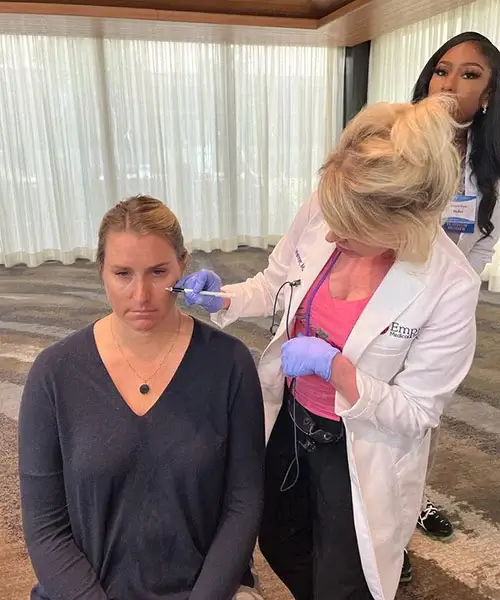The Botox® Legacy: How Two Decades Have Shaped the Face of Cosmetic Treatments
By Dr. Stephen Cosentino
PRESIDENT OF EMPIRE MEDICAL TRAINING
Today, Botox® injections are approved by the U.S. Food and Drug Administration to treat a variety of conditions including ocular misalignment (strabismus), cervical dystonia, excessive sweating, chronic migraines, overactive bladder, and a growing list of cosmetic complaints.
Not just plastic surgeons but dermatologists, dentists, and even registered nurses have permission to inject it in controlled clinical settings.
Botox Cosmetic is the most popular minimally invasive cosmetic treatment on the market, and Botox Therapeutic is quite widely used as well for non-cosmetic indications.
It wasn’t always this way, of course. In fact, until relatively recently, botulinum toxin type A was seen as nothing more than a deadly byproduct of the bacterium Clostridium botulinum.
This is the abbreviated history of how that all changed — and what happened next.
An Abbreviated History of Botox
Let’s take a walk down memory lane and learn about the discovery and commercialization of the substance that would become Botox.
The Early Years: Discovery and Research Before Commercialization
Two scientists deserve much of the credit for bringing Botox to market. The first wouldn’t live to see his work pay off:
- Justinus Kerner: As a young medical officer in the German provinces, Kerner was the first person to identify the C. botulinum bacterium as responsible for a specific type of lethal food poisoning outbreak. Kerner isolated several botulinum toxin types and began describing the effects of botulinum toxin on human neurology.
- Dr. Alan B. Scott: More than a century later, Dr. Scott — an ophthalmologist based in San Francisco — developed the first botulinum toxin-derived treatment safe enough to win FDA approval.
Botox Tiptoes Into the Market
After a lengthy approval process, Scott received FDA approval for his treatment — marketed as Oculinum in 1989. It was indicated for the treatment of two disorders of the eye muscles, blepharospasm and strabismus. The total addressable market (patient population) was quite small, but Dr. Scott’s achievement was recognized as groundbreaking even at the time.
Strap In: Botox Takes Off
Dr. Scott sold the rights to Oculinum in 1991, to a then-nascent pharmaceutical company called Allergan. Allergan rebranded the medication “Botox” and invested millions into further commercialization efforts during the 1990s.
By the end of the 1990s, Botox had a number of FDA-approved indications for musculoskeletal disorders. The medication received approval for its first cosmetic applications in 2002, causing an explosion of interest as an alternative to more invasive cosmetic surgeries.
Botox Today: Success Breeds Imitation
Botox’s popularity grew rapidly during the 2000s and 2010s, as did its roster of FDA-approved applications. Today, Botox is used in the treatment of more than a dozen distinct cosmetic complaints and a similar number of musculoskeletal conditions, including relatively common ones like chronic migraine. Botulinum toxin injection training is among the most popular areas of study for aesthetic medicine practitioners.
In fact, Botox is so popular that it has spawned imitators marketed by Allergan rivals. Patients now have the option to receive injections of botulinum toxin as Dysport, Xeomin, and Juveau, and possibly more to follow.


